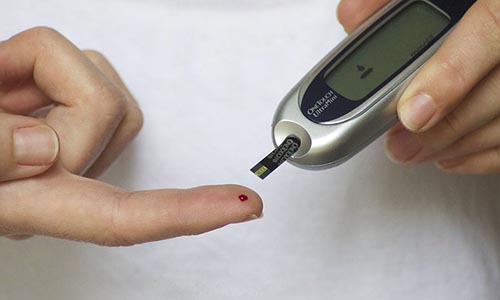Type 1 diabetes is a disease which involves a person having high amounts of sugar (glucose) in the bloodstream. Blood sugar is controlled by a hormone called insulin. It is needed for placing glucose into the body’s cells until it is needed later on. Insulin is produced in the pancreas by special cells called beta cells, but in type 1 diabetes, these cells produce little or no insulin, causing glucose to remain in the bloodstream instead of getting stored into cells, resulting in high blood sugar.
Fact 1: The symptoms of type 1 diabetes are the symptoms of having high blood sugar. The condition for having high blood glucose in the blood stream is called hyperglycemia. In both conditions, the symptoms include:
- feeling very thirsty and hungry
- feeling tired most of the time
- blurry vision,
- tingling sensations or numbness in the feet,
- losing weight without trying and urinating more often occur frequently.
More serious warning symptoms include:
- deep, rapid breathing,
- dry skin and mouth,
- flushed face,
- fruity breath odor,
- nausea or vomiting
- Stomach pain.
Fact 2: The cause of type 1 diabetes is unknown. In type 1 diabetes the immune system attacks and destroys healthy body tissue. Thus, the insulin making beta cells are destroyed by the person’s immune system. This is triggered by infections or cuts which activate the immune system. The cause of this is unknown, but there is a genetic basis as type 1 diabetes can be passed down through families.
Fact 3: There are significant differences between type 1 and type 2 diabetes. The most significant difference is that type 2 diabetes is caused by a diet where insulin is released in such large quantities that the cells become less sensitive to the effects of insulin, resulting in less sugar being removed from the blood. Whereas, in type 1 diabetes, the immune system attacks the insulin making beta cells in the pancreas. Therefore, type 2 diabetes is associated with an inactive lifestyle, obesity and usually is diagnosed in older people whereas type 1 can be diagnosed at any age and doesn’t link to any specific lifestyle.
Fact 4: High blood sugar and low blood sugar can develop in diabetic patients. People diagnosed with type 1 diabetes have to take insulin shots at specific times. After taking insulin symptoms of low blood sugar usually appear. These include:
- headache,
- hunger,
- nervousness,
- rapid heartbeat (palpitations),
- shaking,
- sweating,
- weakness
Fact 5: There are several ways to diagnose type 1 diabetes:
- Measuring blood samples at two different times, when the person is in a fasted-state. If the person’s blood sugar is over 126 mg/dL, the person has diabetes.
- Measuring blood glucose at a non-fasted state. If blood sugar is higher than 200 mg/dL, and is accompanied with symptoms such as increased thirst, urination, and fatigue, the person has diabetes.
- The oral glucose tolerance test, where the person’s blood glucose level is measured when he/she is in a fasted state and then after drinking a sugary drink his/her blood glucose is measured again. Diabetes is diagnosed if his/her glucose level is higher than 200 mg/dL within the period of 2 hours.
Fact 6: Type 1 diabetics often have symptoms foot problems. Damage to blood vessels and peripheral nerves in diabetes can result in leg and feet problems. Peripheral artery disease and peripheral neuropathy can develop during type 1 diabetes and is responsible for increased risk of foot problems in diabetics. Therefore, doctors often check the skin and bones on your feet and legs and checking for numbness in feet in diabetic patients as it can indicate how severe the diabetes is.
Fact 7: Type 1 diabetics often need to take several blood tests. These include:
- Checking blood pressure at least once a year. It should be 140/80 mm Hg or lower.
- Having a red blood cell test done every 6 months (if your diabetes is well controlled).
- Checking your cholesterol levels at least once a year.
Fact 8: Type 1 diabetics may have to get their organs checked in order to monitor the severity of diabetes. This includes taking tests to see if their kidneys are working well or to ensure that their eyes are healthy.
Fact 9: Diabetics need to know how to control the amount of insulin they take when they:
- exercise
- are sick
- are going to eat more or less
- when they are traveling
Fact 10: People with type 1 diabetes have a life expectancy reduced by over 20 years. Type 1 diabetics need to control their diabetes in order to avoid kidney disease, heart disease, organ failure. However, due to improved diabetes care in recent decades, patients with type 1 diabetes are living significantly longer than before.











Leave a Reply